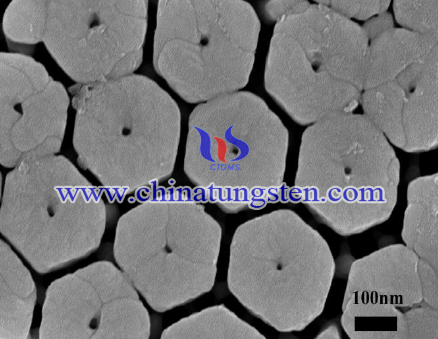Titanium Dioxide / Tungsten Oxide Heterojunction Photocatalytic Performance
- Details
- Category: Tungsten Information
- Published on Thursday, 08 March 2018 09:10
As a typical n-type semiconductor, tungsten oxide and titanium dioxide can be used as a photocatalyst. Due to the large specific surface area and heterostructure, it is foreseeable that the titanium dioxide/tungsten oxide heterojunction should have excellent photocatalytic properties.
Titanium dioxide / tungsten oxide heterojunction was chosen as a photocatalyst to degrade methyl orange dye. For comparison, tungsten oxide nanoplates and titanium dioxide nanoplatelets also degrade MO under the same conditions. The figure is the visible light absorption spectrum of the MO solution in the process of MO degradation by different photocatalysts. Methyl orange maximum absorption peak at 463 nm.

By comparison, it can be found that under different photocatalysts, the degradation reaction of MO occurs. But the degree of degradation is very different. The absorbance at 463 nm decreased significantly with time when titanium / oxide heterojunction was used as photocatalyst. The absorption peak at 463 nm almost disappeared by 150 minutes. Compared with this, when titanium dioxide nanosheets act as a photocatalyst, though the absorbance at 463 nm decreases more obviously. However, compared with titanium dioxide/tungsten oxide heterojunction, there is still a certain gap. By 150 minutes, the absorption peak at 463 nm is still evident. When the tungsten oxide nanosheets act as a photocatalyst, the degradation effect of MO is the worst. By 150 minutes, there is still a large absorbance at 463 nm. The degradation rate of MO reached 95.5% under the titanium dioxide / tungsten oxide heterojunction catalysis at 150 minutes. The degradation rate of MO was 71.1% and 7.3% respectively under the catalysis of titanium dioxide nanosheets and tungsten oxide nanosheets. This result indicates that the TiO2/tungsten oxide heterojunction has good catalytic performance for MO.

- Tungsten Oxide Manufacturer & Supplier, Chinatungsten Online: www.tungsten-oxide.com
- Tungsten News & Prices of China Tungsten Industry Association: www.ctia.com.cn
- Molybdenum News & Price: news.molybdenum.com.cn
- Tel.: 86 592 5129696; Fax: 86 592 5129797; Email: sales@chinatungsten.com



 sales@chinatungsten.com
sales@chinatungsten.com